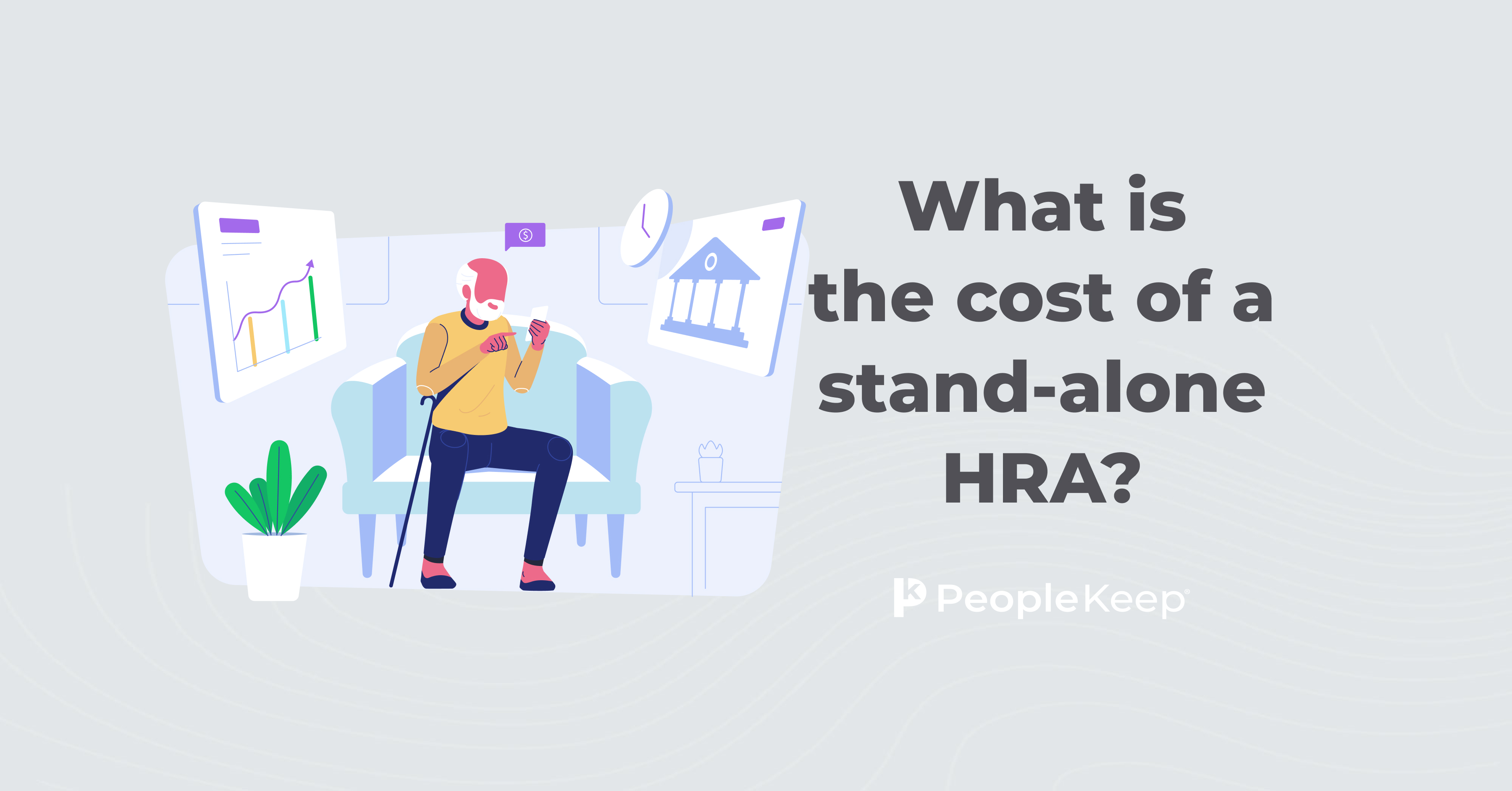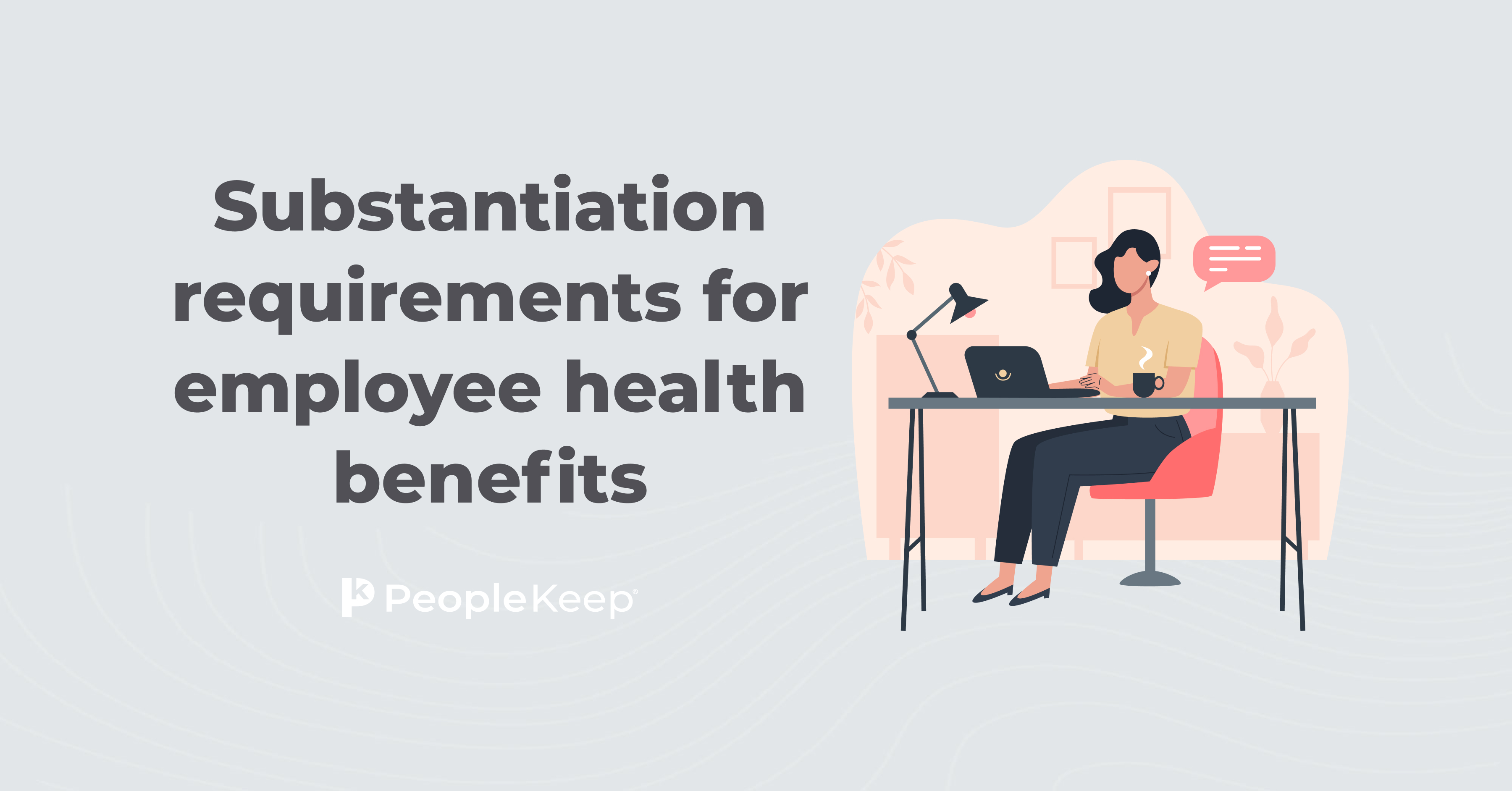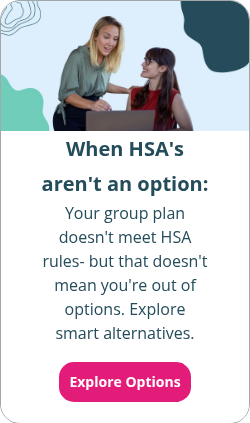IRS Publication 969: Guidelines for HSAs, HRAs, MSAs, and FSAs
By Holly Bengfort on August 22, 2023 at 7:39 AM
The IRS plays a significant role in overseeing and regulating various aspects of our financial lives, including our healthcare benefits.
IRS Publication 9691 serves as a comprehensive guide for employers and human resources professionals to understand the rules and guidelines surrounding various health benefits. This includes health savings accounts (HSAs), health reimbursement arrangements (HRAs), medical savings accounts (Archer MSAs and Medicare Advantage MSAs), and health flexible spending accounts (FSAs).
In this article, we'll review the valuable information this publication provides on eligibility, contribution limits, rollover rules, qualified medical expenses, and more.
Health savings accounts (HSAs)
A health savings account (HSA) is an employee-owned account where eligible individuals and their employers can contribute pre-tax dollars for healthcare expenses. The combined amount contributed by both an individual and their employer can't exceed the annual contribution limit. The IRS updates this limit annually in IRS Publication 969. Any unused HSA funds stay in the account indefinitely.
Employees must enroll in a qualifying high deductible health plan (HDHP) to open or contribute to an HSA. HSAs offer tax benefits, including deductible contributions, tax-free interest, and tax-free withdrawals for covered healthcare costs.
Employees can use their HSA for more than 200 qualified health expenses outlined in IRS Publication 502.
What's new in Publication 969 for HSAs:
- Starting in 2023, an HSA-qualified HDHP may have a $0 deductible for certain insulin products.
- Following the COVID-19 Public Health Emergency, home testing, and personal protective equipment, such as masks, hand sanitizer, and sanitizing wipes, are eligible medical expenses for HSAs.
- An HDHP can provide benefits under surprise billing laws with no deductible. Surprise billing refers to billing incurred for emergency services or air ambulance services. Eligible individuals can still contribute to their HSA even if they receive surprise billing benefits outside of the HDHP. This change started in 2022.
Reminders of recent changes:
- An HSA-qualified (HDHP) with a plan year starting after 2022 and before 2025 may have no deductible for telehealth and other remote care services.
- The IRS considers over-the-counter medicine and menstrual care products medical expenses after 2019.
MSAs
An Archer MSA is a tax-exempt account where you can save money for future medical expenses. Congress created them as part of the Health Insurance Portability and Accountability Act (HIPAA) of 1996 to help self-employed individuals and certain small employers' employees pay for medical care expenses for themselves, their spouse, or dependents.
An Archer MSA can receive contributions from employers and eligible employees, but not both in the same year. Individuals can deduct their contributions, regardless of whether they itemize deductions or not. Employer contributions aren’t taxable. Distributions from an Archer MSA used for qualified medical expenses aren’t taxed. Your money stays in your Archer MSA until you use it. The IRS sets contribution rules for Archer MSA, including annual deductible limits and an income limit.
HSAs replaced Archer MSAs in 2007. You can’t create a new Archer MSA, but you can continue to use existing MSAs and contribute to them.
A Medicare Advantage MSA is a special account designated by Medicare to pay for qualified medical expenses for an account holder that is enrolled in Medicare. Only Medicare can make contributions, and they aren’t included in an employee's income. Distributions from a Medicare Advantage MSA used for qualified medical expenses are not taxed. Money in the account can also earn interest or dividends.
Much like an HSA, an MSA requires a qualifying HDHP.
What's new in Publication 969 for Archer MSAs:
- Expenses related to home testing for COVID-19 and personal protective equipment, such as masks, hand sanitizer, and sanitizing wipes, are eligible for reimbursement through Archer MSAs.
- The IRS considers Over-the-counter medicine and menstrual care products medical expenses as of 2019.
Healthcare flexible spending accounts (FSAs)
A health FSA lets employees set money aside for medical expenses. Salary reduction agreements with your employer fund the benefit, and no taxes are taken out of your contribution. Your employer can also contribute, though it’s less common.
Reimbursements from a Health FSA for qualified medical expenses aren’t taxed. However, FSAs are "use-it-or-lose-it" health benefit plans, meaning you can’t carry over leftover funds at the end of the year unless the plan allows for a grace period or carryover.
What's new in Publication 969 for health FSAs:
- For 2026, the contribution limit is $3,400 (up from $3,300 in 2025). If the cafeteria plan allows carryover, the maximum amount you can roll over is $680 (up from $660 in 2025).
- Home COVID-19 testing kits and personal protective equipment like masks, hand sanitizer, and sanitizing wipes are eligible medical expenses under Health FSAs.
Health reimbursement arrangements (HRAs)
An HRA is an employer-funded health benefit. Employees can't contribute through voluntary salary reduction. Instead, employers reimburse their employees for eligible medical expenses listed in IRS Publication 502 up to a pre-defined maximum amount. Depending on the type of HRA you offer, your employees can be reimbursed for individual health insurance premiums. The IRS only sets maximum contribution rules for qualified small employer HRAs (QSEHRAs). Any unused allowance amounts roll over monthly until the end of the plan year.
An employer's HRA reimbursements aren't included as part of an employee's income, and they're not subject to federal income tax or employment taxes. Depending on the type of HRA, an employer can offer an HRA with other health plans, including FSAs and HSAs.
What's new in Publication 969 for HRAs:
- You can use HRAs to pay for expenses related to home COVID-19 testing and personal protective equipment like masks, hand sanitizer, and sanitizing wipes.
- The IRS considers Over-the-counter medications and menstrual care products medical expenses as of 2019.
Conclusion
IRS Publication 969 is a valuable resource for employers and HR professionals who want to understand the guidelines and regulations surrounding HSAs, HRAs, MSAs, and FSAs. By familiarizing yourself with the information provided in this publication, you can make informed decisions regarding healthcare spending and health plan coverage while ensuring compliance with IRS rules and regulations.
At PeopleKeep, we specialize in health benefits administration. We can help you support your employees with one of three types of HRAs. Our platform eliminates administrative burdens and streamlines the process of offering cost-effective HRAs that align with your company's values.
This article was originally published on August 26, 2013. It was last updated on August 22, 2023.
Check out more resources
See these related articles

Best states for an HRA
Discover the top states for health reimbursement arrangements (HRA) with this guide. Find the best options for your healthcare needs and financial goals.

What is the cost of a stand-alone HRA?
Looking to budget for a stand-alone HRA? Get all the information you need on pricing and expenses in this comprehensive guide.

Substantiation requirements for employee health benefits
There are strict rules outlining how you should handle health insurance reimbursement requests. Learn how to process and reimburse health claims.



